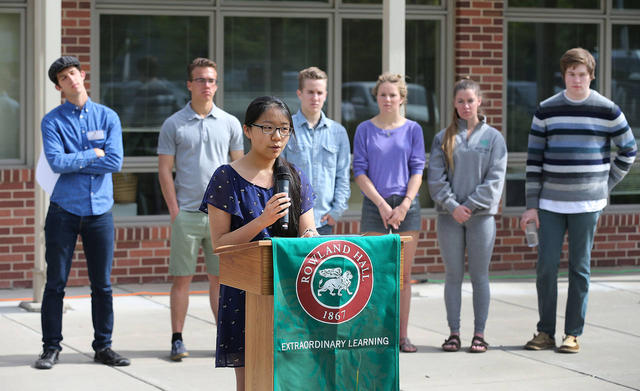Figuring out how to face up to utility monopolies and government leaders is daunting, especially for people still in high school, but there’s no reason why we have to do it alone. In the face of a threat to the future of solar in Utah, I worked with a local advocacy group, Utah Clean Energy, to make sure our policymakers knew that young people want a clean energy future.
In recent months, two events occurred that will affect the growth of solar power in Utah: first, the utility company Rocky Mountain Power (RMP) renewed its efforts to impose a new charge on owners of solar panels; second, the Public Service Commission of Utah began an analysis of the costs and benefits of rooftop solar and, upon the conclusion of their analysis, will rule on whether RMP can implement the new fees.
This decision will not only determine the utility bills of current solar users; it will also determine the competitiveness of solar in Utah. A similar policy enacted by utility companies in Arizona resulted in more than a 40% reduction in new applications for residential solar, a devastating hit to a fledgling sector of clean energy consumption.
In response to this danger, I worked with Utah Clean Energy to write a petition on behalf of my school that urged the commission to take into account the full benefits of solar, rather than what RMP claimed were its costs. In January, I gathered nearly 200 signatures (in a school with fewer than 300 students) and submitted the letter to the commission alongside comments of hundreds of other Utah citizens. In May, I spoke out about my school’s petition and the importance of solar at a press conference to bring additional visibility to the commission’s ongoing investigation.
I was surprised at the response my letter generated. What I had initially thought to be a small-scale project became the subject of interviews with television, radio, and newspaper networks. I realized that young people’s voices mattered and that making an impact on the policy process was not nearly as complicated as I had once thought.
We are surrounded with more than enough resources to help us make our voices heard. Groups like Utah Clean Energy and the Sierra Club have the projects and infrastructure to support young people as we begin our journey into grassroots activism. Since speaking at the press conference, I have also begun working with the Sierra Student Coalition on their Seize the Grid campaign, through which I am excited to reach out to my fellow students at Duke University to attain 100% clean energy on our campus by 2030. There are hundreds of similar projects waiting for your contributions. Reach out to a local organization or speak with your political science teacher or research your movement of interest online – you’ll be sure to find individuals and materials to help you on your way.
Even something as seemingly small as a letter can send a powerful signal to our governments and our communities to show that young people are invested in clean energy. The decisions that are being made today will determine our future. We have the right and the ability to help determine it for ourselves.
